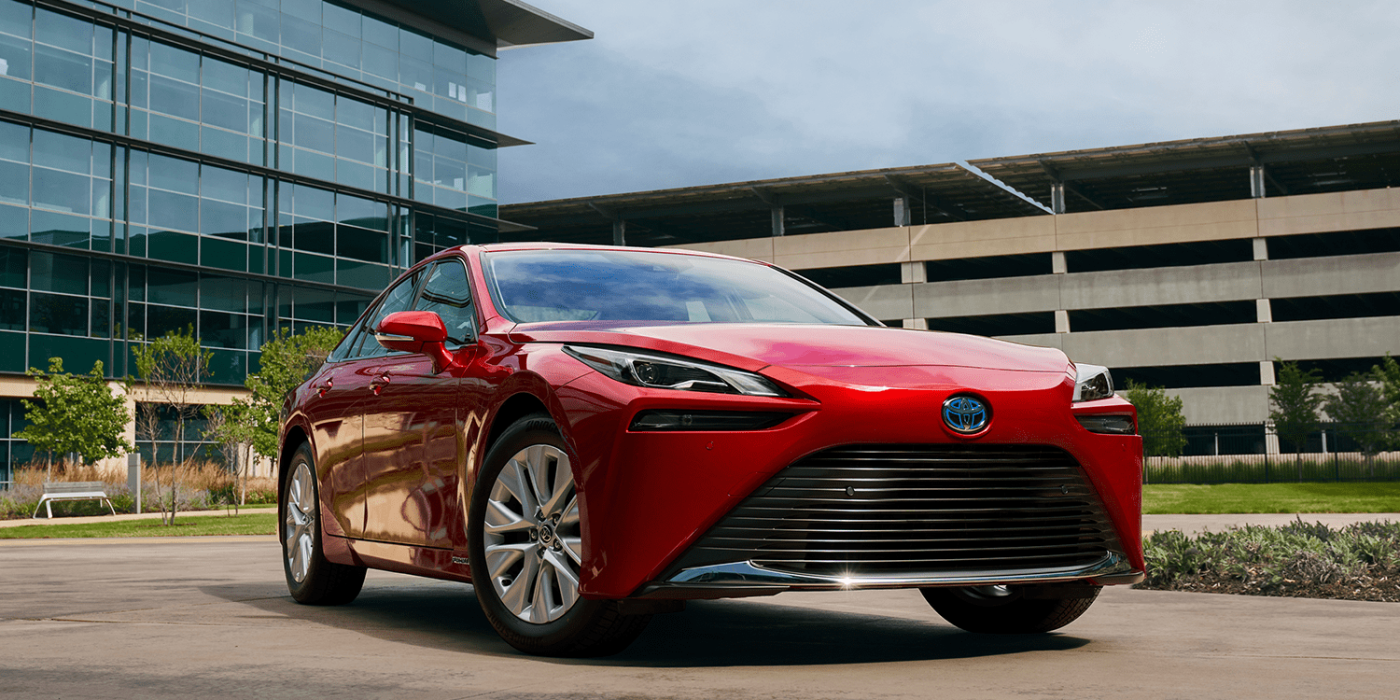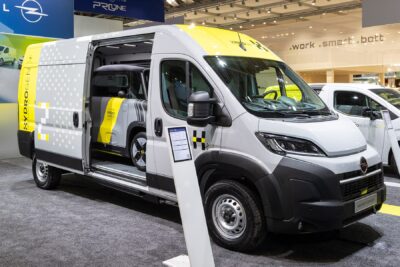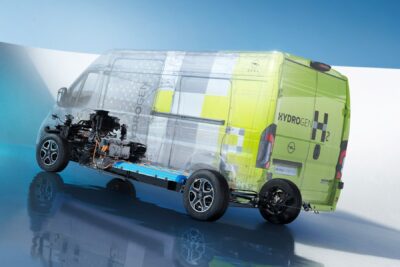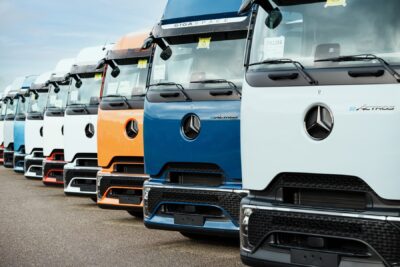Next Toyota Mirai on sale in the US in December
Toyota has announced the second-generation 2021 Mirai, will go on sale in North American markets in December. The hydrogen fuel-cell powered car will be offered in two grades, XLE and Limited.
+ + Kindly see our update below + +
The second-generation model was first presented at the Los Angeles Auto Show, and production was announced at the beginning of this year. Improvements in this generation presented with the opening of sales include digital cockpit and interior comfort features, safety controls and outward appearance. No new information has been given regarding the car’s fuel cell system.
The two grades of this new Mirai modal, the XLE and Limited, are based on Toyota’s new platform. This means it will have rear-wheel drive instead of front-wheel drive. With a length of 4.975 metres, a width of 1.885 metres and a height of 1.47 metres, the model is longer, wider and flatter than the first generation. The Japanese company says: “The new platform allows for a highly rigid body that is lower, longer, and wider, with its bolder stance accentuated by available 20-inch alloy wheels.”
First presented in October 2019, when the production model was presented in January, the company said that thanks to an optimised fuel cell system and larger hydrogen tanks, the range should be up to 30 per cent longer. With the current generation’s 500 km range (around 311 miles), this means a value around the 650 km mark (around 404 miles).
To the more superficial elements, the new Mirai has a 12.3-inch multimedia touchscreen with several new audio features including subwoofer and amplifier. A Qi-compatible smartphone wireless charging tray completes the options near the steering wheel behind which is an 8.-inch TFT LCD digital gauge cluster.
In terms of comfort, the new Mirai has heated and ventilated front and rear seats, a rear touchscreen control panel that includes functions like climate and audio control. The Limited grades have a Bird’s Eye View Camera as standard and are also available on the XLE version. The Limited grade has an additional standard Intelligent Park Assist and a dual-fixed panoramic moonroof with power sliding shade.
Safety features include special braking functions, emergency steering assist and more features for the greater protection of pedestrians and cyclists. Among other such functions, a lane assist function helps alert drivers audibly if the car senses the vehicle leaving a lane without engaging a turn signal.
Toyota has kitted its fuel cell car with different decor, and paint colour choices, including a new Hydro Blue colour which the company says has never been used on a Toyota vehicle before and involves a multiple-layer painting process. This is one of the features that will only be available on the Limited grade.
The Mirai has set standards for hydrogen fuel cell motoring that have been used for a number of other applications in different vehicle types, including an electric catamaran and a fuel cell truck.
Update 30 November 2020: Toyota has provided more details about the new generation of the Mirai. The Japanese manufacturer says that the combination of a new fuel cell powertrain and the GA-L platform will allow a new distribution of key components and that the FCEV will be able to accommodate five passengers. The fuel cell thus moves from the vehicle floor to being under the hood. The even more compact battery and electric motor are located above the rear axle. According to Toyota, this setup gives the rear-drive Mirai a balanced weight distribution of 50 per cent each on the front and rear axle.
In other details, Toyota claims to have designed the fuel cell and the fuel cell converter specifically for use in the GA-L platform. All components including water pumps, intercooler, air conditioner, compressor and hydrogen recirculation are now integrated in the fuel cell network. As in the predecessor model, the second-generation fuel cell uses a solid polymer. According to the manufacturer, the battery pack now consists of 330 instead of 370 cells and has a specific power density of 5.4 kW per litre. The maximum output increases from 114 to 128 kW. Toyota says it has also improved the car’s behaviour in cold weather: Now the cell starts at temperatures down to minus 30 degrees Celsius.
The air system is now also characterised by smaller and lighter components. The battery is also more compact so that it can be placed behind the rear seats. Above all, in future, it will no longer be a nickel-metal hydride battery as in the previous generation, but a lithium-ion battery with 84 cells and 310.8 volts (previously: 244.8 volts) and 4 Ah (previously 6.5 Ah). The power output increases from 25.5 kW times ten seconds to 31.5 kW times ten seconds.
The extensive restructuring of the installation space ensures that there is enough room for three instead of two high-pressure hydrogen tanks as described above. The three tanks are arranged in a T-shape: The largest tank is located longitudinally in the middle under the vehicle floor, the two smaller ones are located transversely under the rear seats and the luggage compartment. The total capacity of the three tanks increases to 5.6 kilograms, about one kilogram more than before. The improved capacity combined with the new engine performance and greater aerodynamic efficiency provides a 30 per cent greater radius of action. Toyota is thus confirming the range of 650 kilometres, which was already calculable on the basis of the 30 per cent specification.
As further features of the new Mirai, the Japanese company names keywords such as new multi-link wheel suspensions at the front and rear, larger wheels and wider tires (19 and 20 inches, 235/55 R19 and 245/45 R20) and a wheelbase extended by 140 mm to 2,920 millimetres.
The manufacturer is now also venturing a prognosis in terms of sales potential. Sales are expected to exceed those of the previous generation by a factor of ten, according to the company headquarters. The carmaker has only sold around 10,000 units of the first Mirai generation, which means that 100,000 car sales are now expected. Toyota describes the pillars of this growth as the improved performance and the greater attractiveness of the new model as well as the almost 20 per cent lower sales price made possible by the development leaps of the hydrogen vehicle. Toyota adds that fuel cell technology, in general, is becoming more and more attractive due to its suitability for everyday use. “The practicality of hydrogen FCEV ownership will also steadily increase as markets improve their hydrogen infrastructure, the number of filling stations rises and Governments and local authorities introduce new incentives and regulations for cleaner mobility”, says Toyota.
Update 14 December 2020: The second generation of the Toyota Mirai can now be ordered in Germany in three equipment lines. As previously reported, prices for the fuel cell model start at 63,900 euros. In Japan, the new Toyota Mirai has already been in dealerships since 9 December at prices starting at 7.1 million yen.
Update 18 December 2020: Now released for the US: The Mirai XLE grade has a starting MSRP of $49,500, which is $9,050 less than the starting MSRP of the outgoing 2020 Mirai. The Limited grade has a starting MSRP of $66,000. Mirai XLE grade will have a starting lease price of $499 a month, while the Limited grade lease pricing starts at $549 a month.
Updates by Cora Werwitzke
toyota.com, toyota.eu (update), toyota.com (update 18.12.2020)





0 Comments